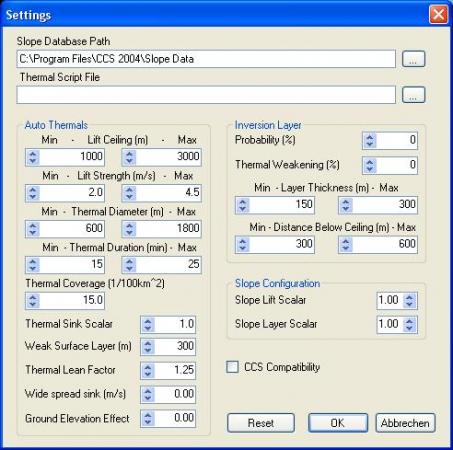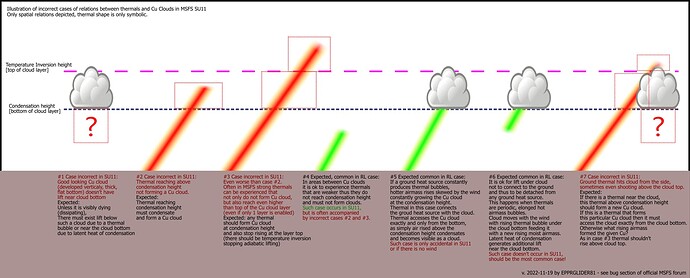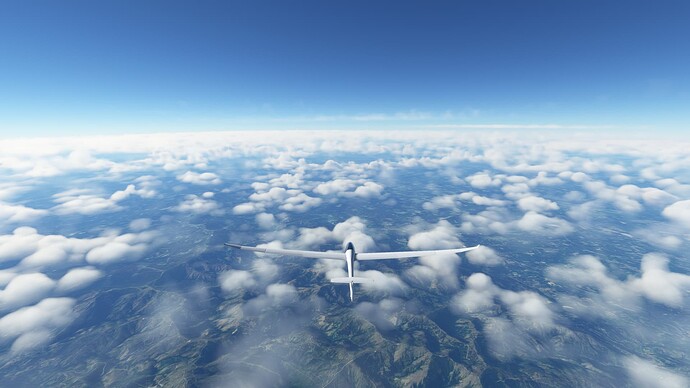You are not the first one experiencing this. MAny glider instructors hate simulators because lack of proper advere yaw/use of rudder simulation - current implementation of DG nad LS8 are lacking in this area too (unofficial gliders are better as they allow you to adjust adverse yaw strength).
I filed a bug report about not enough adverse yaw - Both official gliders should have stronger adverse yaw requiring use of rudder for turning please support it, as bad reflexes of not using rudder for turinig in gliders trained in the sim may cause RL deaths with unexpected sping during final turn when in stressful situation people return to the first reflexes.
Already done:)
Also here, because not only gliders are effected with unrealistic adverse yaw, it’s almost every aircraft…
And I just can’t understand how this could happen, if Asobo is actually modeling airflow and basic forces such as lift and drag. A halfway accurate airflow model should automatically create greater adverse yaw in an aircraft, like a sailplane, with a long span very high aspect ratio wing. The fact that it doesn’t seem to create even a little bit more adverse yaw than it does for something like a C-152 is very troubling, and makes me wonder what is really going on inside the simulation.
We diverge too much from the main thread subject - but I just quickly some link with explaination Adverse Yaw - Basics still missing - #44 by MSGamerTag01 MSGamerTag01 is designer of 3 unofficial gliders and made adverse yaw adjustable on the scale - very good solution as for me I wan’t to recreate what I am used to in RL not to perfectly replicate what given glider has. Anyway I suggest reading other MSGamerTag01 posts - he is very experienced RL glider pilot and wrote many valuable posts about gliders in MSFS.
Incorrect spatial relations between thermals and Cu clouds makes realistic glider flights impossible
Reposting this really good sum up what’s currently wrong with thermals and needs fixing:
The other day I set up the weather so that there are some thermals. Switched on the thermal visualization. Then flying between 2 thermals I had a permanent climb of 1 m/s. Flat terrain.
So then I didn’t bother to enter a thermal because I was going to stay afloat forever. Try that in a real glider and reality will prove otherwise.
Yeah, unfortunately the glider implementation was the big disappoinment of the 40 Anniversary Update.
A few months ago I had a fantastic flight over completely flat terrain where thermals seemingly were right where you would expect them. After trying some more flights in different parts of the world I now know that this great flight was a fluke and that I couldn’t replicate that experience.
There is no rhyme or reason to where the thermals are located, even though Seb said it was based on the properties of the ground brightness and how much energy is being reflected / absorbed.
Well, unfortunately that doesn’t seem to be the case. Thanks to the thermal visualization it’s pretty clear now that they are located in random and nonsensical locations, with no visual clues that you would find in the real world (terrain, clouds, circling birds).
The only way to find thermals/lift is by complete trial and error (which is extremely frustrating), by using ridge lift or the thermal visualization. Well, I don’t want to glide in the mountains all the time, and I don’t want to have that visualization spoil the view all the time either, as it breaks immersion big time.
I guess I will just have to give gliders a wide berth for now and hope for the better.
So here is the reason why it’s an disapointment:
when they chose an simplified version over an existing more realistic version,
then there was never a chance this could be any good.
- MSFS currently uses simplified Thermals
Also that wavelift is off the development list is the next big disapointment,
the only possible way they considering a future implementation is if enough people beg for it…
- Wavelift for MSFS only possible if demand is big enough
With discus 2c, picked up a thermal near a 1000m high hill, using live weather. Got to 8500m with constant 4m/s climb rate and wasn’t stopping. Headwind was more than 90km/h so I was standing still and going up like an elevator!
Realistic?!
If MSFS modelled wave lift that would not be totally unrealistic.
But from all Asobo have said, it doesn’t model wave, and no other form of lift should give lift to that sort of altitude.
It has happened ONCE to 2 people that I can find record of.
It was hang gliders, not fixed wing, and there was an exceptional weather phenomenon.
Sadly one of them died.
The main takeaway from this is this would only be possible under very specific conditions. i.e. a towering cumulonimbus(thunderstorm), assuming you survive the turbulence that is. Not just anywhere all the time.
Indeed!
i did that once together with my dad in his glider - 25 years ago. Picked up a wave at the north side of the alps, took us to 7500m. We had oxygen and it was freezing cold (-30 outside).
Once you got the right position it takes you camly all the way way up.
So yes, this can happen in reality - but in very rare circumstances.
there is now a seperate wishlist topic for Wave Lift
It’s related to thermals up&down drafts, but it’s such an special case it deserved an own thread.
Some gliding meteorology book ad had this very good thermal visualization:
Acompannied by text:
Early in the convective day, thermals arising from a good trigger sources will also initially form as bubble thermals. As the day develops and the heating increases, these good trigger sources will become column thermals. Beware of making a glide to a classic trigger source early in the day even if you see pilots climbing out! It may still be pilots rising in a convective bubble. If you join them below the bubble may have already passed on. At this time the only way to ensure the climb is to arrive above the circling pilots. Later in the day when the column is established you will be able to slot in at almost any point along the length of the column and successfully climb out. In Piedrahita we have many such classic thermals sources, some of them are especially well known, such as the “Cemetery Climb” near the Pass. Going XC early and arriving at this area is something of a lottery as you may arrive between thermal bubble pulses and not find lift. However, later in the day arrival at almost any altitude in the convective layer will reward you with an excellent climb.
While it is obvious that we sadly do not have the left case modelled in MSFS (hope for realism update that would bring this to MSFS in next update),
after short investigation we can also confirm that we do not have the right case either - please note how at the ground air should flow almost horizontally sucked towards thermal trigger and form narrow column of air - while currently we have air parallely magically produced by the ground - this is pt 2 of my bug report Too small distances between thermals suitable for gliding - Bug Reports / Weather & Live Weather - Microsoft Flight Simulator Forums
Those animations would be even better if at some height there would be a condensation height and those thermal would form clouds.
To back @EPPRglider81 up a bit, here’s what seems to be the difference between the MSFS ground-heating-air-rising model and real thermals:
The caution is it is difficult to think of a weather ‘slider’ that would convert the apparent MSFS implementation on the right to the more accurate thermal on the left.
The current MSFS implementation definitely seems to have the misunderstanding that when the sun heats square miles/kilometers of ground, the air across that entire area all rises upwards. It definitely does not do that. The air ‘collects’ near the ground and then rises in a relatively narrow column.
The cloud may cover a large area, but that may be a result of multiple thermals over time and also the cloud drifting with the wind over time.
A power pilot may feel some minor ‘turbulence’ under a cloud, or in the region of a cloud, bit this ‘turbulence’ in no way reflects the extent of the thermal. Some extreme conditions could generate lift/sink/turbulence anywhere, including related to some cloud types, but this shouldn’t confuse the implementation of basic thermals.
I don’t know if Marten from the MSFS twitch stream is active in the Forum, but letting us know that they are using an simplified thermal version was very honest and I’m really thankful and hope he doesn’t get any trouble for that ![]()
His answers were very clear and straight to the point, that was very nice!
Would be awesome to know what are the key differences between the current simple thermals and their more realistic version (If he is in the Forum and allowed to talk about that) and if they are taking any of the here showcased stuff into acount ![]()
The ideal solution would be realistic thermals that reflect the current weather conditions while taking into account a myriad of influences like time of day, season, slope angle, terrain, land type, wind speeds and lapse rates etc.
Failing that, a model that allows for user input could also be enjoyable. Cumulusx employed this model quite successfully and allowed for realistic and varied thermal conditions in FSX.

If this data analysis done by ANRI (conducted using the weather debug tools) is correct, then we are seeing a shift away from clouds as being the thermal identifiers.
Instead we now have thermals rising from the ground on seemingly random locations.
Making it impossible to develop a strategy when flying cross country.
Even though the Thermal identification Tutorial in-game tells users to fly towards clouds. In reality this is not a viable gameplay strategy as it stands.
No wonder they had to ship unrealistically high amounts of thermals, because your only chance to find one, is to stumble upon one.
Right now, when creating weather presets for glider flights we have to add crazy cloud layers towering over 30000 ft in the air and make them so dense that they look like volcanic eruptions to get any decent amount of lift.
As someone who has spent nearly 1000 hours flying gliders (mods) in MSFS, i have to say that SU11 feels like a step backwards in this regard.
The current thermal model is neither realistic (confirmed by FlightSim Studio) nor is it fun (due to points mentioned above).
image credit: ANRI
// SSC Georg





